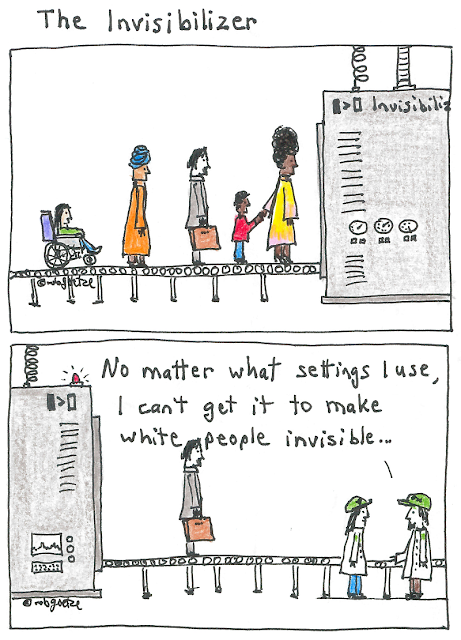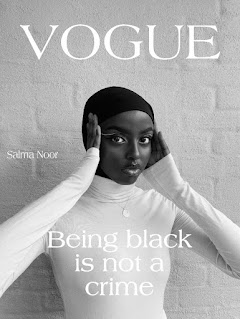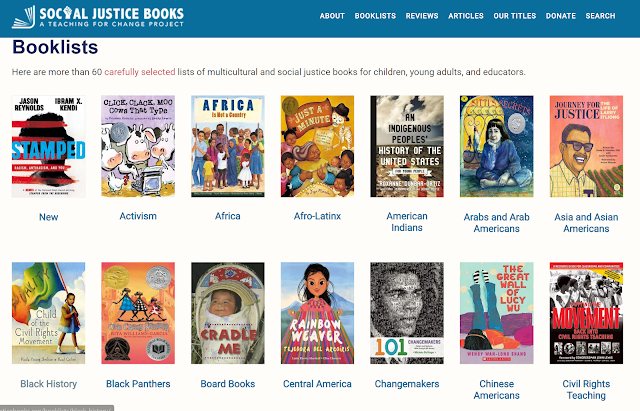Friday, July 17, 2020
[allegories on race and racism]
Camara Jones in this video does an amazing job of explaining the dimensions of racism, and presents four helpful allegories:
Direct link to video
Tuesday, July 14, 2020
Sunday, June 21, 2020
[a fifth direction]

If you are familiar with Indigenous teachings, you will know that the four directions feature prominently in many of them.
For example, a Prayer in the Four Directions by Francis Whiskeyjack refers to east as the physical dimension, south the mental dimension, west the emotional, and north the spiritual.
Other teachings refer to the relationship between the four directions, the four races, the four seasons, and so on. Often these are mapped onto a medicine wheel such as the one shown to the right.
The poet Eduardo C. Corral wrote a poem which had an interesting line in it. After speaking about someone burning sage and facing the four directions, he writes:
Some Mesoamerican eldersbelieved there’s a fifth direction.Not the sky or the groundbut the person right next to you.
The fifth direction as the person right next to us...
Who has been that fifth direction for you? Who has been there in difficult times and in good times? And for whom can you be that fifth direction, that person to turn to?
This idea also reminds me of the movie The Five Elements. Four of the elements are the traditional elements: fire, water, earth and air. The fifth element is -- well, I won't spoil the movie for you, but it is also an unexpected twist. Watch the movie if you enjoy futuristic films that have interesting characters, a good storyline, an amazing opera singer and more -- all without being dystopian.
Back to Corral's poem: this concept of the fifth direction really moves the directions from the conceptual and abstract (seasons, four aspects of a person, colours, races) and sacred medicines and people and animals in general, to a very real person - the person next to me. That's where, to use one of my late father's phrases, "the rubber hits the road".
Poem excerpt from "To Francisco X. Alarcón (1954–2016)" by Eduardo C. Corral.
Read the whole poem https://poets.org/print/poem/8bae9876-e503-4f9c-8835-28bbe26e24ff
categories:
embrace,
indigenous
Saturday, June 20, 2020
[when god made stones]
Here is the first stanza of a stunning poem by Kaitlin Hardy Shetler:
when god made stonesdid he decide ahead of timewhich ones were made for throwingdid he weigh each one for maximum impacta stone for the whoresa stone for the gays
Read the rest of this poem on Kaitlin's Facebook page:
One of a set of poems by her and others with the tag #poemsfortheresistance
Wednesday, June 17, 2020
the invisibilizer
The Invisibilizer
While the Invisibilizer is a machine in the cartoon above, it is still is a reality for many marginalized people. The racist, cisheteropatriarchal systems that we live in tend to highlight their own while rendering invisible those who are minoritized.
Verb
invisiblize (third-person singular simple present invisiblizes, present participle invisiblizing, simple past and past participle invisiblized)
(transitive, chiefly sociology) To make invisible; to marginalize so as to erase the presence or contributions of. Wiktionary.org
categories:
racism,
white supremacy
Friday, June 12, 2020
[brilliant critique of Vogue's whitewashed covers]
"Oslo-based student Salma Noor posted her own version of a Vogue cover on June 2, with the cover line “Being black is not a crime” in support of Black Lives Matter. Noor modeled for the alternative cover herself, with the help of photographer @calvin. Little did she know that the trend would go insanely viral days later—thanks in part to a June 6 internal memo from Vogue‘s editor-in-chief herself, Anna Wintour." (source)
Salma's action started a trend where people of colour did the same, tagging their images with #VogueChallenge.
categories:
art,
race,
racism,
white supremacy
Tuesday, June 09, 2020
[social justice books]
Social Justice Books calls itself "the best selection of multicultural and social justice books for children, YA and educators," and looking at their site makes it obvious that their claim is true.
The site includes curated booklists, an excellent Guide for Selecting Anti-Bias Children’s Books, and more! The booklists (the above picture 14 of the over 60 booklists available) include almost every culture imaginable as well as broader topics like culture/language, hair, holidays, etc.
Sunday, June 07, 2020
Monday, June 01, 2020
what does it mean to celebrate all people?
Sometimes organizations make bold statements in their mission, vision and value statements (and the like). But what do such statements mean? How are they realized (real-alized; made real)?
I offer this as one example of how one can respectfully ask about such statements, in a way that promotes accountability, provokes thinking, and encourages movement forward.
Last summer I wrote to our parish priest about a statement that was sent out in a key document. Here's my side of the email:
I have a question for the leadership regarding the following value from the mission action plan document that was sent out:
Welcoming and Open to All
We will live Christ’s words: “Love your neighbor as yourself.” We will be a welcoming parish family. We love and celebrate all people regardless of age, culture, sexuality, or socio-economic status.
We will live Christ’s words: “Love your neighbor as yourself.” We will be a welcoming parish family. We love and celebrate all people regardless of age, culture, sexuality, or socio-economic status.
I’m wondering in particular what the last sentence means. Does it mean that we at our church generally celebrate all people without regard or attention to any of these things, even those things like race, culture or sexuality which are unique and something to be specifically celebrated? Kind of like being “colour-blind” where we celebrate all people regardless of their colour but in fact we ignore their colour and their ethnic / racial uniqueness and what they bring to the table and how the community is enriched by them?
Or will we actually celebrate people for who they specifically are, including race, culture and sexuality? Kinda like the way the LGBTQ2S+ community is acknowledged and celebrated particularly in June here in Edmonton, or the way we in our church region are beginning to recognize and celebrate indigenous peoples?
Related to this: two Sundays ago two women were sitting in the row in front of us. Based on their affection and physical contact, I would assume they are a couple and I wondered, how did they know this would be a safe place to be themselves? It's not a reasonable assumption to make about churches, and the public face of our church does not indicate that LGBTQ2S+ people would be welcome. Did they speak to one of the clergy in advance? Do they know someone who attends here? Were they just taking a chance on us and lucked out? I don't know.
Further related to this: P, you preached about a prophetic imagination. How might we imagine a church where all people are truly embraced and seen as an integral and needed part of the body? A church where none are shamed? A church which makes it obvious that people walking in will be loved and embraced? A church that shines its light on a hill instead of hiding it under a bushel?
Warm regards,
Rob
Note: I received a very positive response from our priest, who said that the leadership was discussing this and moving forward to look at specific ways of implementing.
Monday, May 25, 2020
[free unconscious bias microlearning lessons]
Addressing Unconscious
Bias with
Modern Learning
 Grovo has made all 20 of its Unconscious Bias Microlearning lessons available for free.
Grovo has made all 20 of its Unconscious Bias Microlearning lessons available for free.These mini lessons are 3 minutes or less, and give a quick and easy to understand introduction to the topic:
https://www.grovo.com/addressing-unconscious-bias
And while you're at it, check out the new "Learning Snippets" from Aaron Barth. The first three are free to try -- these short 5 minute lessons get you thinking about bias in the workplace and how to respond to it.
https://www.learningsnippets.ca/try3free
Thursday, April 30, 2020
another haiku for our time
solace
clouds trump sun and moon
warm rain like tears streaming down
dog-god comforts me
written by rob goetze for rachel,
for poem in your pocket day, april 30, 2020
Tuesday, April 21, 2020
[revision and resistance - kent monkman]
 My birthday present just arrived in the mail, and I'm super excited about it:
My birthday present just arrived in the mail, and I'm super excited about it:In collaboration with Kent Monkman and his studio, the Art Canada Institute is publishing a book on the commission and creation of his diptych unveiled at New York’s Metropolitan Museum of Art this week. Revision & Resistance: mistikôsiwak at The Metropolitan Museum of Art, which will be available for sale in March 2020, celebrates Monkman’s groundbreaking paintings with essays by today’s most prominent voices on Indigenous art and Canadian painting. (source: the Art Institute of Canada webpage)
Kent Monkman is a Cree two-spirited artist living in the Toronto area whose work I've been following for a few years. He combines traditional European painting techniques with Indigenous imagery with critiques of colonization and Eurocentric views of history.
Here is one of the two pieces that he created for the Met:
Read more about the book:
https://aci-iac.ca/news/art-canada-institute-in-collaboration-with-kent-monkman
View my post about Monkman's exhibit, "The Rise and Fall of Civilization", at the Glenbow Museum in Calgary last year.
Friday, April 17, 2020
[rise and fall of civilization - exhibit]
In the late summer of 2019, I visited the Glenbow Museum with one specific goal in mind: to see the exhibit "The Rise and Fall of Civilization" by Kent Monkman, a Cree two-spirit artist based in Toronto.
From the museum's website:

Kent Monkman’s The Rise and Fall of Civilization references the near extinction of the American bison in the 1800s when unsustainable hunting practices, used primarily by white settlers, reduced the number of bison from over 30 million to just a few hundred by the 1880s. During this time, bison or buffalo were hunted for their durable hides and their bones were used for fertilizer and in the manufacture of bone china. The buffalo meat was left to rot, decimating a food source that had sustained Indigenous peoples for generations.
(source)
Read more at the Glenbow Site: https://www.glenbow.org/exhibitions/kent-monkman-the-rise-and-fall-of-civilization/
The exhibit is long-term at the Glenbow, so be sure to check it out once the pandemic is over.
For a video about one of Monkman's other works, The Deluge, visit:
https://m.youtube.com/watch?v=OqbhG4BX6oU
All photos by rob goetze. (c) 2019.
Thursday, April 09, 2020
[inclusion lens - event management tool]
York University has a great "inclusion lens" event management tool which is very helpful for ensuring that events are as inclusive and accessible to all as possible. And even better, this tool is available to the public!
Each of the four main categories - Planning, Advertising, Implementing and Evaluating - offers a list of questions. Click on any question and it expands to show specific considerations. Click on any consideration and a tip pops up with an explanation or more information.
Here's an example from the Planning section, showing the considerations for the question: "Is your event location accessible?"
Go have a look and try it out for your next event:
https://inclusionlens.yorku.ca/
categories:
tools
Subscribe to:
Posts (Atom)












